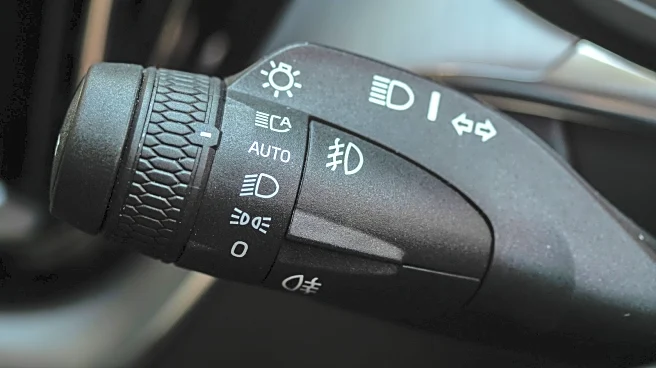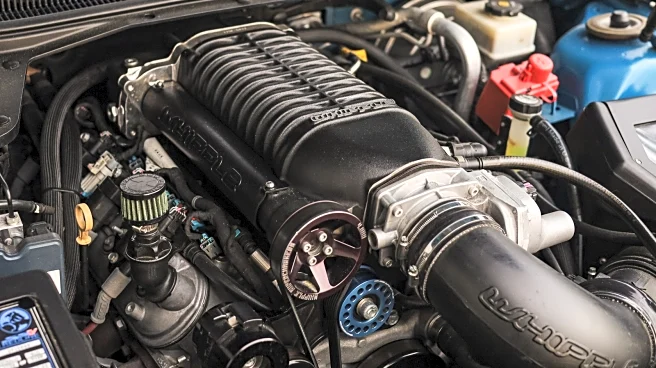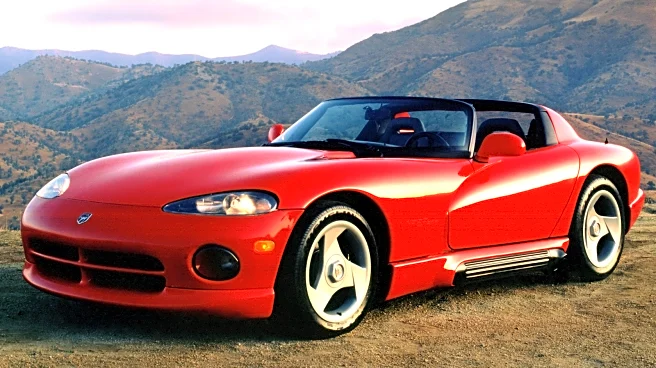
The entertainment craft known as Foley art involves creating sound effects for movies, TV, and video games using environmental sounds and common objects. Foley editors work with a project's audio team to design and generate the vivid effects that bring life and texture to a story told through these media. The use of hollowed-out coconut shells to mimic the sound of horse hooves on cobblestones is so well-established and expected by film audiences that it's even used when movie horses are walking
on grass or sand. For the 1993 film "Jurassic Park," the production team used recordings of tortoises to bring velociraptors to life. It might come as a surprise that car manufacturers employ the same tricks of the trade, although typically without the help of amorous reptiles.
Our vehicles make all sorts of noises, from carefully tuned exhaust notes to the subtle chimes that reminds us to fasten our seatbelts. One sound that used to be nearly universal in cars was the intermittent "click" noise made by the turn signal relay that makes the signal lamps flash. This ticking sound reminds drivers that the signal is active and to turn it off when the turn is complete. While modern cars have self-canceling mechanisms that automatically deactivate the turn signal after the driver makes a full turn, this sometimes doesn't happen on shorter maneuvers or when changing lanes. Volvo turned to some Hollywood-worthy Foley art to generate sounds for the otherwise silent electronically controlled turn signals in its cars. The company's Active Sound Experience team took to the forest near the automaker's Gothenburg, Sweden headquarters and snapped about 300 dry, fallen sticks in search of the perfect crisp "click."
Read more: 10 Car Brands With The Nicest Interiors
Evolution Of The Turn Signal

Once they had captured this basic building block of audio, sound designer Frederick Hagman's team processed it digitally to generate the two tones they needed for the turn signal "on" and "off" sounds. As with other automakers, Volvo plays these imitative sounds through a car's audio system. To make its otherwise noiseless electric vehicles like the C40 and XC40 Recharge safer for pedestrians, bicyclists, and other motorists, Volvo layered human vocals to generate a soft choral tone that is heard outside the car at low speeds. Volvo didn't stop at breaking twigs and layering human vocals; our time spent with the 2025 Volvo EX30 revealed an otherworldly reverse warning tone that wouldn't be out of place in a science fiction movie.
The tellale click of a working turn signal wasn't a thing until the late 1930s, but the first automotive turn signals were designed by Canadian movie star and auto enthusiast Florence Lawrence two decades earlier. She designed a mechanical turn signal system just after World War I that used dash-mounted buttons to raise a signaling arm on the back of the car. The first modern electrical signaling system appeared on the 1939 Buick Eight with the ostentatious name of "flash-way direction signals."
Rivian Also Uses Natural Sounds In Its Vehicles

Volvo isn't the only carmaker turning to nature to create soundscapes for its vehicles. Rivian went in a similar direction with the noise the R1T makes at low speeds, called its acoustic vehicle alert system (AVAS). Partnering with a sound design firm and taking cues from the natural world, Rivian landed on a tone that blends the sounds of wind and flowing water. The confirmation tone from the R1T and the R1S when drivers lock the vehicle began as the chirp of a mountain bluebird.
The use of Foley art in car manufacturing is not a new idea, although it's become more complex and common in recent years. It's a popular tactic for EV makers since their near-silent operation makes these cars a potential hazard to others; artificial sounds can save lives. The next time you're in your vehicle — EV or not — pay close attention to the symphony around you and you just might hear something interesting.
Want the latest in tech and auto trends? Subscribe to our free newsletter for the latest headlines, expert guides, and how-to tips, one email at a time.
Read the original article on SlashGear.













